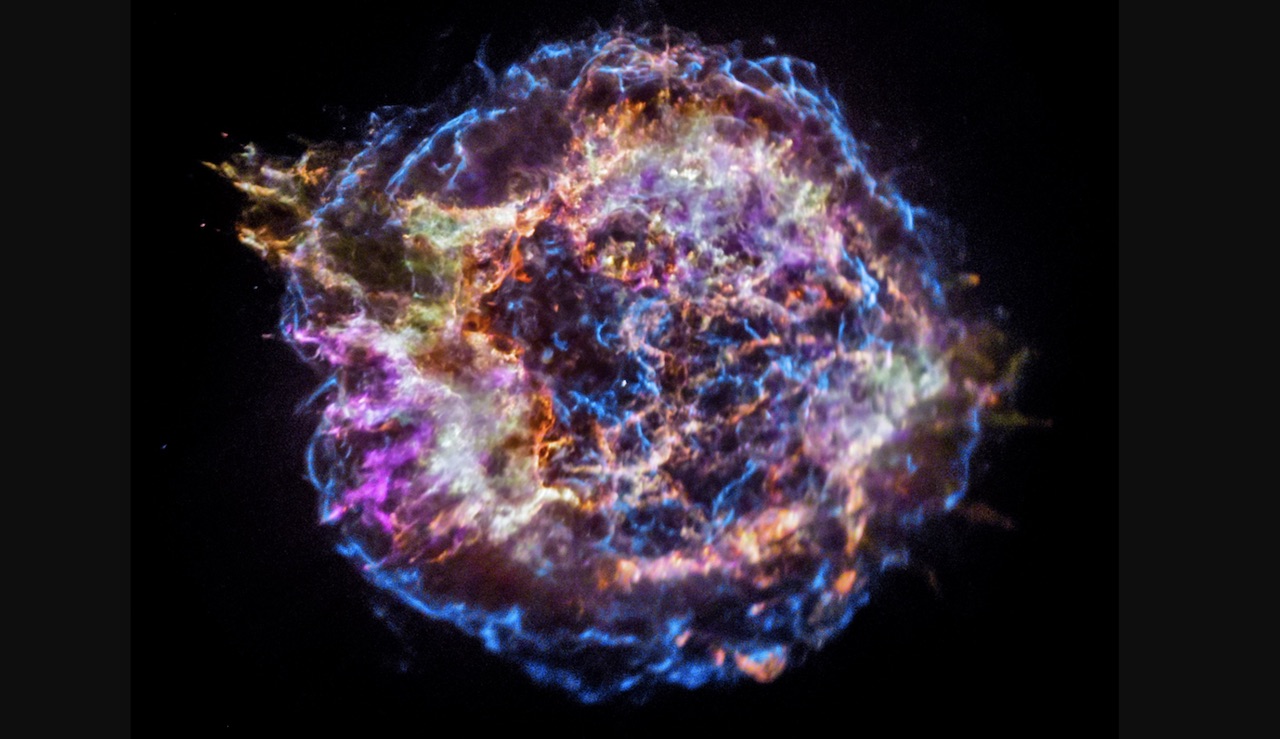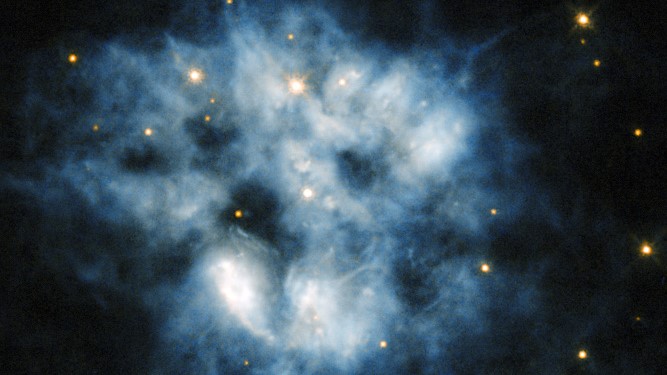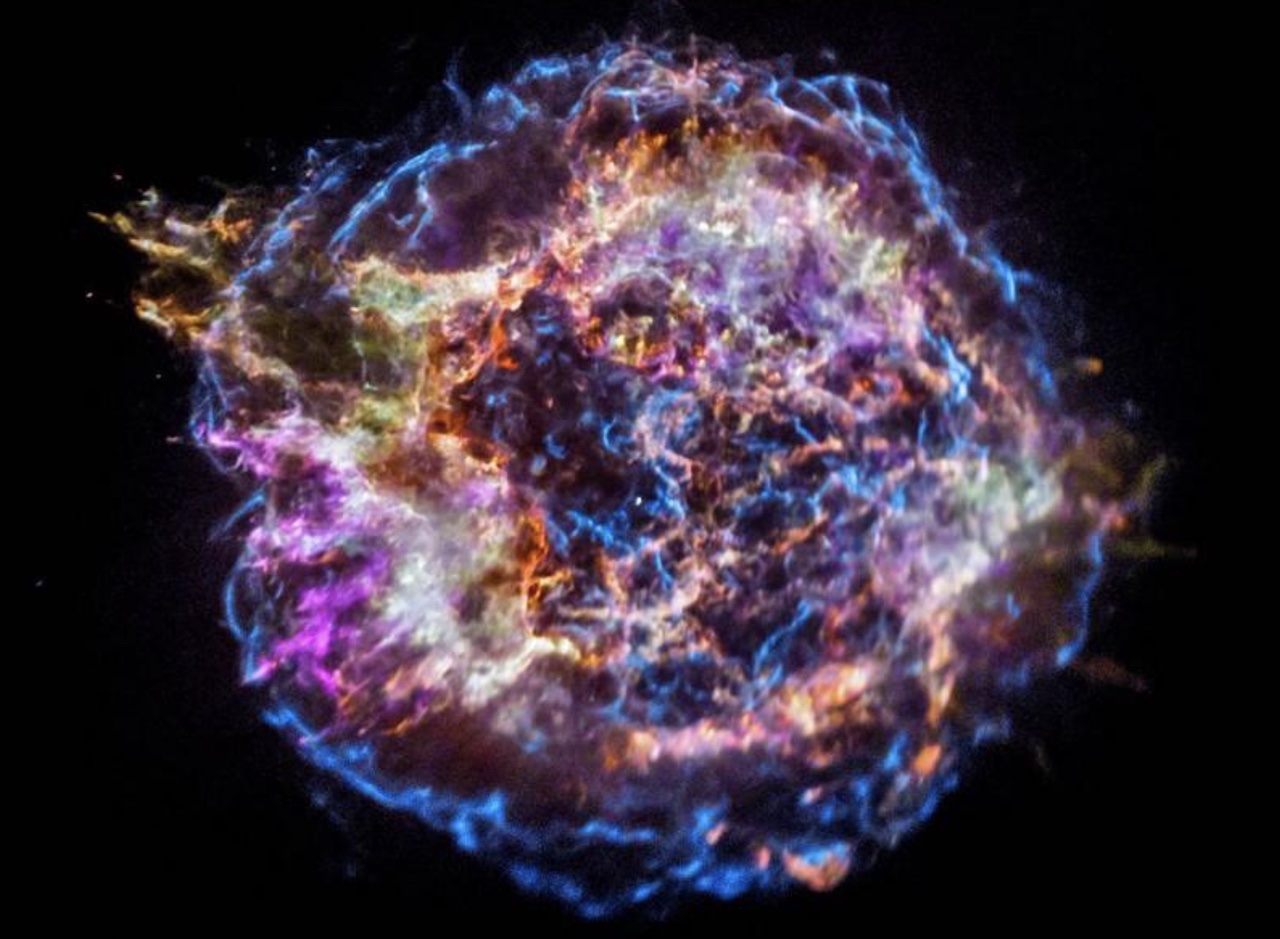The Chandrasekhar limit: Why only some stars become supernovas
The Chandrasekhar limit determines whether a star ends its life as a smoldering white dwarf, or explodes in a supernova to become a neutron star or black hole.

The Chandrasekhar limit determines if a star dies as a white dwarf, or has the mass to exceed this, launching a supernova to create a black hole or neutron star.
Stars are locked in battles against their own gravity, all of which will eventually be lost, leading to violent and radical changes that mark the end of their main sequence lifetimes.
Some of these stars will end their lives as slowly cooling stellar embers known as white dwarfs, but for other stars, this stage merely marks a transition. They will go on to explode in massive cosmic blasts called supernovas creating a neutron star or even a black hole.
What is the Chandrasekhar limit?
The Chandrasekhar value for a white dwarf star is generally considered to be 1.4 solar masses , according to The SAO Encyclopedia of Astronomy — that is 1.4 times the mass of the sun. First predicted by Subrahmanyan Chandrasekhar in 1931, the Chandrasekhar limit mass has so far corresponded well with observations as we are yet to find a white dwarf with a mass above 1.4 solar masses.
Before reaching a white dwarf state, stars first lose mass by shedding their outer layers. This means that the 1.4 solar masses usually represents the stellar core that is left behind.
According to Swinburne University, the beginning mass for stars that remain white dwarfs is 8 solar masses, though other predictions suggest a star has to be ten times the mass of the sun to leave a core with enough mass to exceed the Chandrasekhar limit.
If it is in a binary system, however, a stellar core doesn't need to begin with enough mass to exceed the Chandrasekhar limi. For white dwarfs with a binary partner, there is another way they can exceed this mass limit.
If a white dwarf at the edge of the Chandrasekhar limit is accreting mass from its partner — referred to as a donor star — then this can push it beyond the Chandrasekhar limit. This results in further thermonuclear burning, usually the fusion of carbon and oxygen, and pushes the white dwarf towards a supernova explosion.
These circumstances lead to a very specific type of supernova called a Type Ia supernova different from supernovas caused by core collapse.

Will the sun explode?
In around 4.5 billion years the sun will run out of hydrogen in its core meaning it can no longer sustain nuclear fusion. This will signal the end of the outward pressure that stops its core from collapsing under gravity.
As the core collapses, the outer layers of the sun will puff out in a series of outbursts beginning a short-lived red giant phase for our star. In the core helium created by the fusion of hydrogen will begin to fuse into carbon.
The shed outer layers will spread out to the orbit of Mars, consuming the inner planets including Earth, eventually becoming a planetary nebula that surrounds a scorching hot, albeit gradually cooling stellar core known as a white dwarf.
This is how our sun and other low to medium mass stars will remain for trillions of years, meaning the sun will not explode.
This isn’t the end for all stars, however. Some have enough mass to push past this white dwarf phase and initiate further nuclear fusion, a supernova, and the transformation into an exotic stellar remanent.
The dividing line between these fates is the Chandrasekhar limit.
What protects a Chandrasekhar mass star against further collapse?
With all the hydrogen of a stellar core exhausted at the end of the main sequence the white dwarf that remains consists mainly of carbon — created by the fusion of helium in the red giant stage.
A white dwarf with a mass of 1.4 solar masses or less can’t initiate carbon burning but continues to contract until this is halted by electron degeneracy pressure.
This is the principle from quantum physics that prevents two electrons from occupying the same quantum state and essentially prevents them from cramming too close together, providing the pressure to support the white dwarf against its own gravity. But even this limit can be exceeded.

Beyond the Chandrasekhar limit
In stellar cores with a mass greater than 1.4 times that of the sun, carbon burning can be initiated creating neon, according to The SAO Encyclopedia of Astronomy. This leads to further stages of core contraction and the burning of successively heavier elements until the heaviest element that can be synthesized in stars , iron, fills the core.
With no more fusion possible, the stellar core collapses for a final time. If the core has a mass under 3 times that of the sun, neutron pressure protects it from complete collapse leading to the creation of a neutron star. This is the densest state of matter equivalent to a star the size of the sun squashed into the radius of a city.
For stellar remnants over 3 solar masses, predicted to have begun as stars with 10 to 24 times the mass of the sun, complete collapse occurs leading to the final stage as a black hole.
Exceeding the Chandrasekhar limit doesn’t just create some of the most fascinating and mysterious cosmic objects in black holes and neutron stars, but the supernova that signals their birth is a vital part of the evolution of the universe.
This is because these cosmic explosions take heavy elements synthesized during the lifetime of massive stars and spread them across the cosmos. This provides the building blocks that form the next generation of stars and their planets.
Additional resources
To learn more about Subrahmanyan Chandrasekhar, you can watch this video by Edupedia World. For more information about the final fate of most massive stars, read NASA's page about black holes.
Bibliography
- Jones. M. H., Lambourne. R. J. A., Serjeant. S. "An Introduction to Galaxies and Cosmology". (Cambridge University Press, 2015)
- Ryan. S. G., Norton. A. J. "Stellar Evolution and Nucleosynthesis". (Cambridge University Press, 2010).
- Green. S. F., Jones. M. H. "An Introduction to the Sun and Stars". (Cambridge University Press, 2015)
- "Chandrasekhar Limit", The SAO Encyclopedia of Astronomy, Swinburne University, (2022)
- "White Dwarf", Hyperphysics (2022).
- "One Weird Type of Star Acts Like Another", NASA (2022).
- "Black Holes", NASA Science (2022).
- "Chandrasekhar limit", Encyclopedia Britannica.
Join our Space Forums to keep talking space on the latest missions, night sky and more! And if you have a news tip, correction or comment, let us know at: community@space.com.
Breaking space news, the latest updates on rocket launches, skywatching events and more!

Robert Lea is a science journalist in the U.K. whose articles have been published in Physics World, New Scientist, Astronomy Magazine, All About Space, Newsweek and ZME Science. He also writes about science communication for Elsevier and the European Journal of Physics. Rob holds a bachelor of science degree in physics and astronomy from the U.K.’s Open University. Follow him on Twitter @sciencef1rst.
